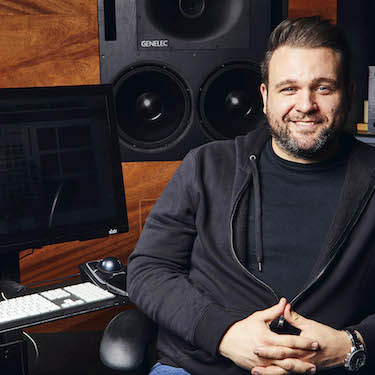|

BURBANK, CALIFORNIA: “Growing up, my family had a rule that everyone had to learn an instrument,” recalled engineer Kyle Mann. “I started on the cello at age five, but I always hated practicing. When I was eleven, I got a boom box that could record, so I recorded myself practicing and then played that back from my room instead of actually practicing. It was the moment that ended my career as a cellist and began my career as a recording engineer!” By all accounts, it appears to have been a smart move because today Mann owns three-room Speakeasy Sound in Burbank, California and navigates a packed schedule of recording, mixing, producing, and songwriting from Studio A and other studios around town. He has a longstanding collaboration with celebrated producer Theron "Neff-U" Feemster and an extensive list of satisfied clients, including Ariana Grande, Camila Cabello, Highly Suspect, and (currently) Leslie Odom Jr. Who knows if Mann would have been so successful as a cellist?
These days, Mann uses Metric Halo’s ChannelStrip 3 plugin on every vocal tracking session and most mixes.
“I originally got into ChannelStrip 2 back in the mid-2000s when my partner at a studio space in Nashville insisted that we include it in our Pro Tools rig,” he said. “Back then, it was the only EQ that let you change any band to any filter type – high pass, low pass, band pass, low shelving, high shelving, or parametric – so I didn’t have to insert a whole other instance to double up on filter types. Since then, I’ve really come to rely on ChannelStrip’s compressor section as well. It’s truly one of the few tools that I can’t live without. And if I’m going to attach my name to something, it has to be something I really believe in.”
Mann moved to Los Angeles, started doing a lot of freelance pop recording work, and came to appreciate the town’s high-pressure, low-resources way of making musical magic out of thin air. “Much of the time, the song doesn’t exist yet at the beginning of the day, and by the end of the day, we have all the basic tracks for the record.” he said. “The vocalists I work with are amazingly talented and, given a more relaxed schedule, could easily lay down a pitch-perfect track. However, the pace of the work and the industry’s acceptance of the ‘Autotune sound’ mean that we can work much faster if everyone monitors through Autotune. If a note is so far out it pulls the Autotune in the wrong direction, then it needs to be re-tracked, but otherwise it’s something we can run with. A lot of the vocals you hear on pop radio were tracked while everyone was still figuring out the lyrics and the melody!”
Consequently, Metric Halo ChannelStrip now plays a role in Mann’s workflow for a new reason. As studios upgraded to Pro Tools HDX, Mann came to learn that you couldn’t monitor through a native plug-in (necessary for Autotune) without first inserting a DSP plugin (e.g. ChannelStrip). Now, whenever he’s away from Speakeasy Sound, Mann brings an iLok and a thumb drive with the Metric Halo installer and a template for his favorite default settings for a vocal session. “I’m not sure what magic is happening under the hood, but the Metric Halo ChannelStrip compressor is absolutely perfect for vocals,” he said. “It instantly sounds like a record! I send the cue to the singer, and they love it. I can stack a ridiculous number of instances and it never sounds harsh. Now everybody who works at Speakeasy Sound uses the same workflow. It’s literally on everything we record here.”
Mann recently branched out into the larger family of Metric Halo plugins. “Metric Halo Precision De-Esser is a solid tool,” he said. “Compared to other de-essers, it has a very broad range of frequencies so I can use it for problems other than just sibilance. Metric Halo TransientControl is another great problem solver. I commonly have to blend live drums with samples, and the sustain knob in TransientControl can really dry things out nicely. Since I installed it, I’ve been using Metric Halo Character on everything. I’ll throw saturation on a mix bus or a vocal or whatever. Really, any time I need to make something cooler with over-the-top effects or just that little bit of excitement that makes something stand out. Character lets me make my mixes sound like they’re ready to explode!” |